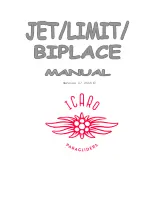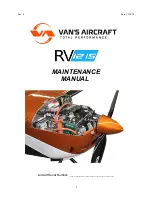
applies to Sinus 503, Sinus 582 in Sinus 912
equipped with Rotax 503, Rotax 582
and Rotax 912 engines
Sinus NW (nose-wheel edition) owners please regard to the
Supplemental sheet at the back of this manual
WARNING!
As this manual applies to all models of Sinus ultralight motorglider it is mandatory to designate
those specific parts of this manual that regard the aircraft you own.
This booklet MUST be present inside the cockpit at all times!
Should you be selling the aircraft make sure this manual is handed over to the new owner.
This is the original manual of Pipistrel d.o.o. Ajdovscina
Should third-party translations to other languages contain any inconsistencies,
Pipistrel d.o.o. denies all responsibility.
Flight manual and
Maintenance manual
REV. 0
(15 April, 2006)
Summary of Contents for Sinus 503
Page 5: ...5 SINUS motorglider www pipistrel si REV 0 ...
Page 6: ...6 SINUS motorglider www pipistrel si REV 0 This page is intentionally left blank ...
Page 8: ...8 SINUS motorglider www pipistrel si REV 0 This page is intentionally left blank ...
Page 11: ...11 SINUS motorglider www pipistrel si REV 0 Aircraft projections General ...
Page 12: ...12 SINUS motorglider www pipistrel si REV 0 This page is intentionally left blank ...
Page 20: ...20 SINUS motorglider www pipistrel si REV 0 This page is intentionally left blank ...
Page 48: ...48 SINUS motorglider www pipistrel si REV 0 This page is intentionally left blank ...
Page 54: ...54 SINUS motorglider www pipistrel si REV 0 This page is intentionally left blank ...
Page 93: ...93 SINUS motorglider www pipistrel si REV 0 Appendix This page is intentionally left blank ...
Page 102: ...102 SINUS motorglider www pipistrel si REV 0 This page is intentionally left blank ...
Page 108: ...108 SINUS motorglider www pipistrel si REV 0 This page is intentionally left blank ...































